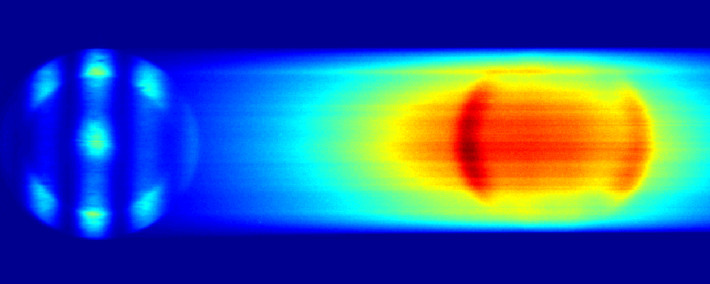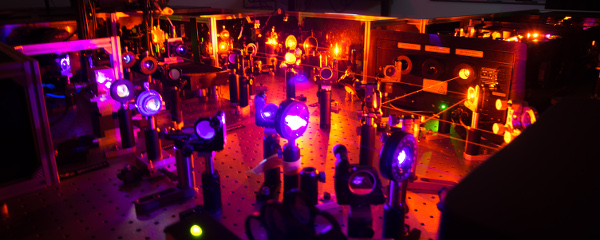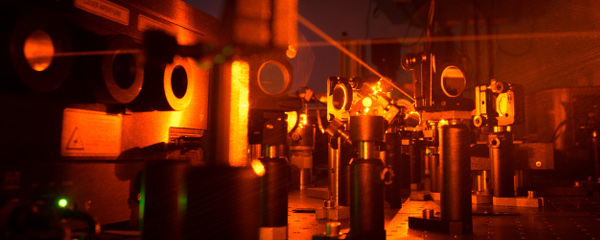Nonlinear spectroscopy


If a material is irradiated with very short laser pulses, nonlinear effects may occur due to the high intensity of the pulses. This is similar tothe striking of a bell, in which, in addition to the fundamental tone, upper harmonics are always excited to vibrate. A typical example of this is the generation of the second harmonic: light of twice the frequency is generated so that when excited with red light also blue light is emitted.

The probability for non-linear processes is very dependent on the material properties. We investigate the nonlinear properties of metal nanoparticles, which show strong nonlinearities due to their plasmonic properties. If individual particles are examined, as we do, the nonlinearity, in addition to the frequency dependent also the angle-dependent radiation characteristic can be investigated. The coherence of the nonlinear processes leads to interference processes between different emission centers. In combination with numerical simulations, the spatial origin of nonlinear signals can thus be determined with great precision.In addition to the fundamental understanding of nonlinear processes at the nanoscale, our experiments are promising with regard to optical communication via photonic circuits. In the next step, the coupling of nonlinear emission to waveguides will be investigated. With these, the generated light can be directed to another location to, e.g. excite another structure.
